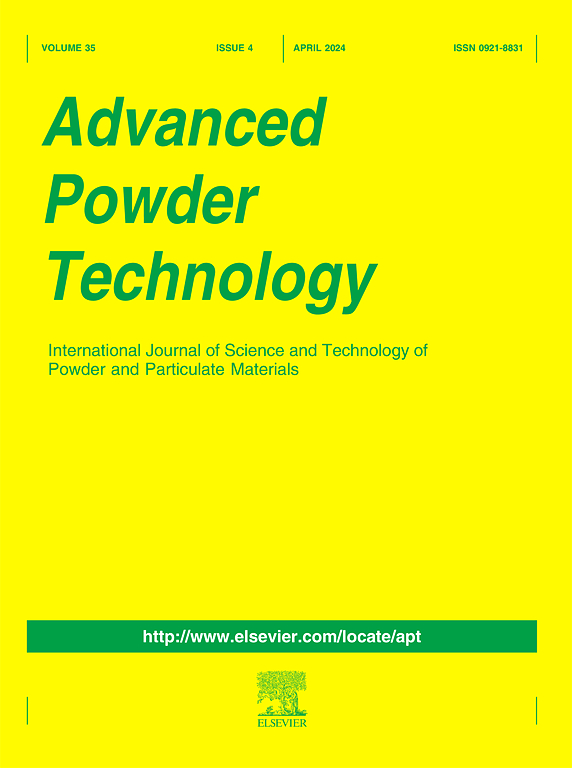Subgrid scale gas-particle stress model-based simulation of dense particle flows in a bubbling fluidized bed
IF 4.2
2区 工程技术
Q2 ENGINEERING, CHEMICAL
引用次数: 0
Abstract
A novelty gas-particle stress model at subgrid scale level is proposed to consider the effect of gas turbulence on particle motions. The anisotropic characteristics of interaction between gas and particles are described by using a second-order moment model, the modeling of particle–particle collision is based on the kinetic theory of granular flow and the four-way coupling strategy is combined. A large eddy simulation is established to predict particles and bubble movements in a small-scale fluidized bed, simulation results are well agreed with the experimental data and the proposed model is validated. Results show that bubblelike granular temperature is greater than smaller-scale particle granular temperature and the flow patterns of two-phase turbulence are heterogeneously. Bubble motions have a great effect on particle dynamics. The distributions of axial and horizontal velocities of particles at center, middle and wall regions are approaching the normal distributions. The largest dominant frequency of particle concentration is 34.2 Hz at central region of lower bed height, approximately 1.3 times larger than that of wall region. Maximum ratios of wall to those central values are 8.3 for axial particle velocities.

基于亚网格尺度气-颗粒应力模型的鼓泡流化床致密颗粒流动模拟
为了考虑气体湍流对粒子运动的影响,提出了一种新的亚网格尺度气粒应力模型。采用二阶矩模型描述了气体与颗粒相互作用的各向异性特征,基于颗粒流动动力学理论建立了颗粒碰撞模型,并结合了四向耦合策略。建立了小型流化床内颗粒和气泡运动的大涡模拟模型,模拟结果与实验数据吻合较好,验证了模型的有效性。结果表明:气泡状颗粒温度大于小尺度颗粒温度,两相湍流流型具有非均匀性;气泡运动对粒子动力学有很大的影响。粒子在中心、中部和壁面的轴向和水平速度分布接近正态分布。低层高中心区域颗粒浓度的最大主导频率为34.2 Hz,约为壁面区域的1.3倍。对于轴向粒子速度,壁与中心值的最大比值为8.3。
本文章由计算机程序翻译,如有差异,请以英文原文为准。
求助全文
约1分钟内获得全文
求助全文
来源期刊

Advanced Powder Technology
工程技术-工程:化工
CiteScore
9.50
自引率
7.70%
发文量
424
审稿时长
55 days
期刊介绍:
The aim of Advanced Powder Technology is to meet the demand for an international journal that integrates all aspects of science and technology research on powder and particulate materials. The journal fulfills this purpose by publishing original research papers, rapid communications, reviews, and translated articles by prominent researchers worldwide.
The editorial work of Advanced Powder Technology, which was founded as the International Journal of the Society of Powder Technology, Japan, is now shared by distinguished board members, who operate in a unique framework designed to respond to the increasing global demand for articles on not only powder and particles, but also on various materials produced from them.
Advanced Powder Technology covers various areas, but a discussion of powder and particles is required in articles. Topics include: Production of powder and particulate materials in gases and liquids(nanoparticles, fine ceramics, pharmaceuticals, novel functional materials, etc.); Aerosol and colloidal processing; Powder and particle characterization; Dynamics and phenomena; Calculation and simulation (CFD, DEM, Monte Carlo method, population balance, etc.); Measurement and control of powder processes; Particle modification; Comminution; Powder handling and operations (storage, transport, granulation, separation, fluidization, etc.)
 求助内容:
求助内容: 应助结果提醒方式:
应助结果提醒方式:


